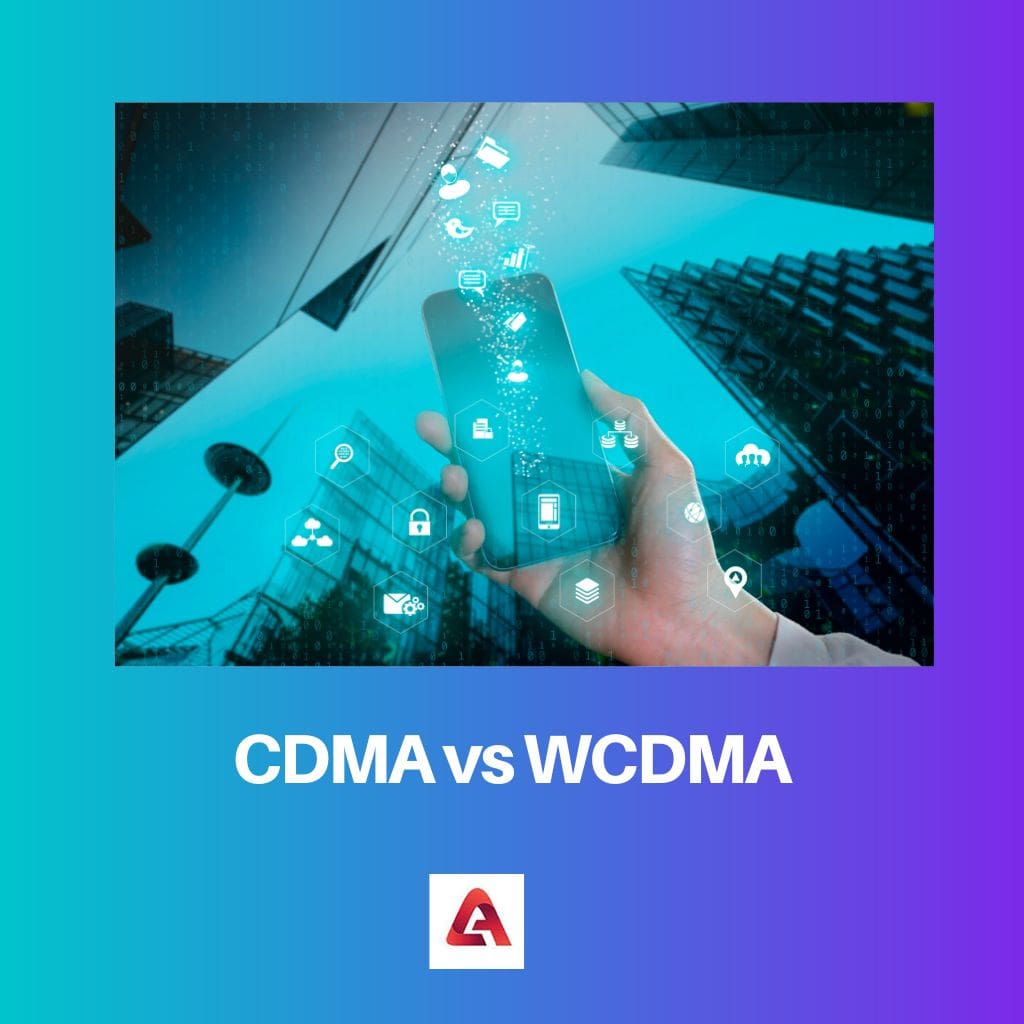CDMA (Code Division Multiple Access) is a spread spectrum technology allowing multiple users to share the same frequency band by encoding each user’s signal with a unique code. WCDMA (Wideband Code Division Multiple Access) is an evolution of CDMA, offering higher data rates and capacity by utilizing wider bandwidth. WCDMA is the foundation of 3G mobile networks, providing faster data transmission and improved voice quality compared to traditional CDMA systems.
Key Takeaways
- CDMA (Code Division Multiple Access) is a technology that uses spread spectrum techniques for communication, while WCDMA (Wideband CDMA) is a third-generation mobile communication technology.
- CDMA provides more secure communication, while WCDMA offers faster data transfer rates.
- CDMA is used in the United States, while WCDMA is used in Europe and Asia.
CDMA vs. WCDMA
The difference between CDMA and WCDMA is that CDMA is the technology used in 2G networks, while WCDMA is used in 3G networks.

CDMA stands for Code Division Multiple Access. This algorithm helps a user capture several channels for the same bandwidth. So, in simple terms, it improves the connection by accommodating more users per MHz of bandwidth.
WCDMA stands for Wideband Code Division Multiple Access. It uses the same technology as CDMA but incorporates it into 3G. This works with GSM and EDGE to be used as UMTS, resulting in higher internet speed.
Comparison Table
| Feature | CDMA | WCDMA |
|---|---|---|
| Generation | 2G (second generation) | 3G (third generation) |
| Network type | Stands alone | Overlay on GSM network |
| Frequency bands | Narrower (1.25 MHz) | Wider (5 MHz) |
| Data speed | Slower (up to 153 kbps) | Faster (up to 384 kbps) |
| Voice and data | Can’t handle both simultaneously | Can handle both simultaneously |
| Coverage | Smaller | Larger |
| Security | Uses unique codes for each user | More robust security features |
| Current usage | Rarely used, being phased out | Phased out in most regions, but still used in some areas |
What is CDMA?
Code Division Multiple Access (CDMA) is a digital cellular technology that allows multiple users to access a common frequency spectrum simultaneously. Unlike traditional analog systems, where each user is assigned a unique frequency channel, CDMA enables multiple users to share the same frequency band by encoding their signals with unique spreading codes. This encoding technique allows for more efficient spectrum utilization and increased capacity within the network.
Operation
In CDMA systems, each user’s data is spread over the entire bandwidth of the system using a unique pseudorandom spreading code. These spreading codes are orthogonal to each other, meaning they do not interfere with one another when transmitted simultaneously. As a result, CDMA signals appear as noise to users employing different spreading codes, allowing for multiple signals to occupy the same frequency band without causing significant interference.
Advantages
- Increased Capacity: CDMA offers higher spectral efficiency compared to traditional analog and time division multiple access (TDMA) systems, allowing for more users to be served within the same frequency spectrum.
- Improved Security: The use of unique spreading codes for each user provides inherent privacy and security, as unauthorized users without the correct code cannot access the transmitted data.
- Better Call Quality: CDMA systems exhibit improved voice quality and reduced dropped calls due to the technology’s robust error correction capabilities.
Applications
CDMA technology has been widely deployed in various wireless communication systems, including 2G and 3G cellular networks. It served as the foundation for the development of subsequent mobile communication standards such as WCDMA (3G) and EV-DO (3G/4G). Despite the emergence of newer technologies like LTE and 5G, CDMA remains in use in certain regions and legacy systems, although its prominence has diminished over time.

What is WCDMA?
Wideband Code Division Multiple Access (WCDMA) is a third-generation (3G) wireless communication technology that builds upon the principles of CDMA. WCDMA enhances data transmission rates and network capacity compared to its predecessor, enabling advanced mobile services such as high-speed internet access, multimedia messaging, and video calling. It is a key technology in the evolution of mobile networks towards higher data rates and improved user experiences.
Operation
WCDMA operates by utilizing a wider bandwidth compared to traditional CDMA systems, allowing for increased data rates and capacity. Like CDMA, WCDMA employs spreading codes to differentiate between users and enable simultaneous transmission within the same frequency band. However, WCDMA uses a wider channel bandwidth, enabling faster data rates and supporting a greater number of users within the network.
Advantages
- High Data Rates: WCDMA offers significantly higher data transmission rates compared to previous generations of mobile networks, making it suitable for bandwidth-intensive applications such as streaming video and high-speed internet browsing.
- Enhanced Capacity: The wider bandwidth utilized by WCDMA allows for a greater number of users to be served simultaneously within the same coverage area, improving overall network capacity and reducing congestion.
- Improved Quality of Service: WCDMA provides better voice quality and supports a range of multimedia services, offering users a more seamless and satisfying communication experience.
Applications
WCDMA serves as the basis for many 3G mobile networks worldwide, providing high-speed data connectivity and advanced multimedia services to millions of users. It has been widely deployed by mobile operators as part of their efforts to upgrade their networks and meet the growing demand for mobile data services. While newer technologies such as LTE (Long-Term Evolution) and 5G have since emerged, WCDMA continues to play a significant role in supporting 3G services and legacy devices, although its usage is gradually declining as operators transition towards more advanced technologies.

Main Differences Between CDMA and WCDMA
- Generation:
- CDMA is a second-generation (2G) wireless communication technology.
- WCDMA is a third-generation (3G) wireless communication technology.
- Bandwidth:
- CDMA utilizes a narrower bandwidth compared to WCDMA.
- WCDMA operates using a wider bandwidth, enabling higher data rates and capacity.
- Data Rates:
- CDMA offers lower data transmission rates compared to WCDMA.
- WCDMA provides significantly higher data transmission rates, making it suitable for bandwidth-intensive applications.
- Network Capacity:
- CDMA has a limited capacity compared to WCDMA due to its narrower bandwidth.
- WCDMA supports a greater number of users simultaneously within the same coverage area, improving overall network capacity.
- Applications:
- CDMA primarily supports voice and basic data services.
- WCDMA enables advanced mobile services such as high-speed internet access, multimedia messaging, and video calling.



